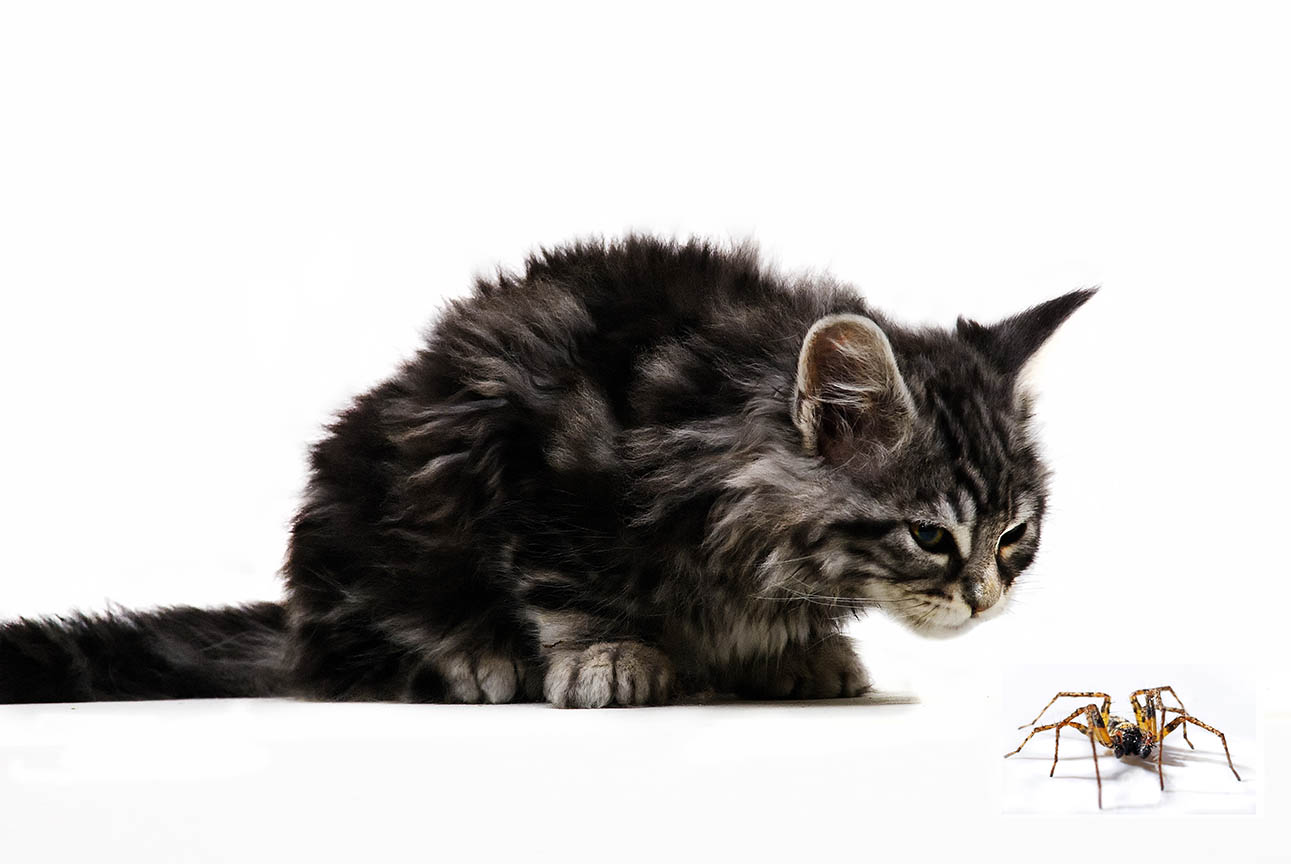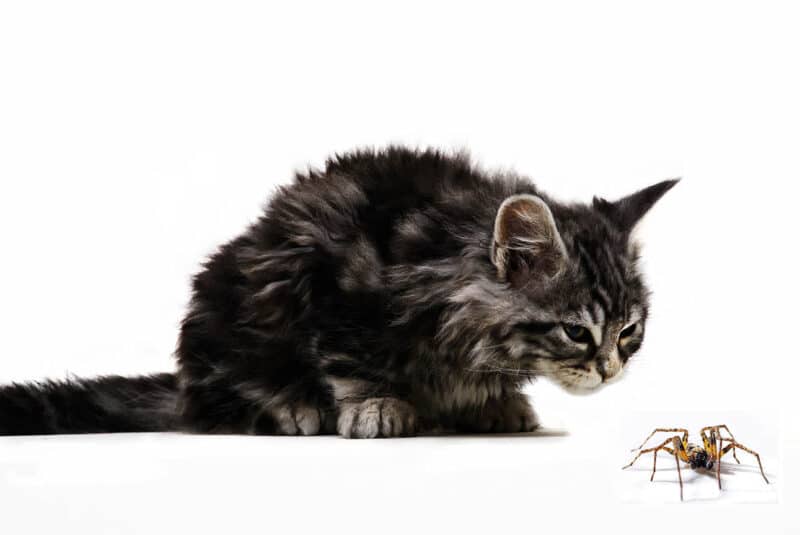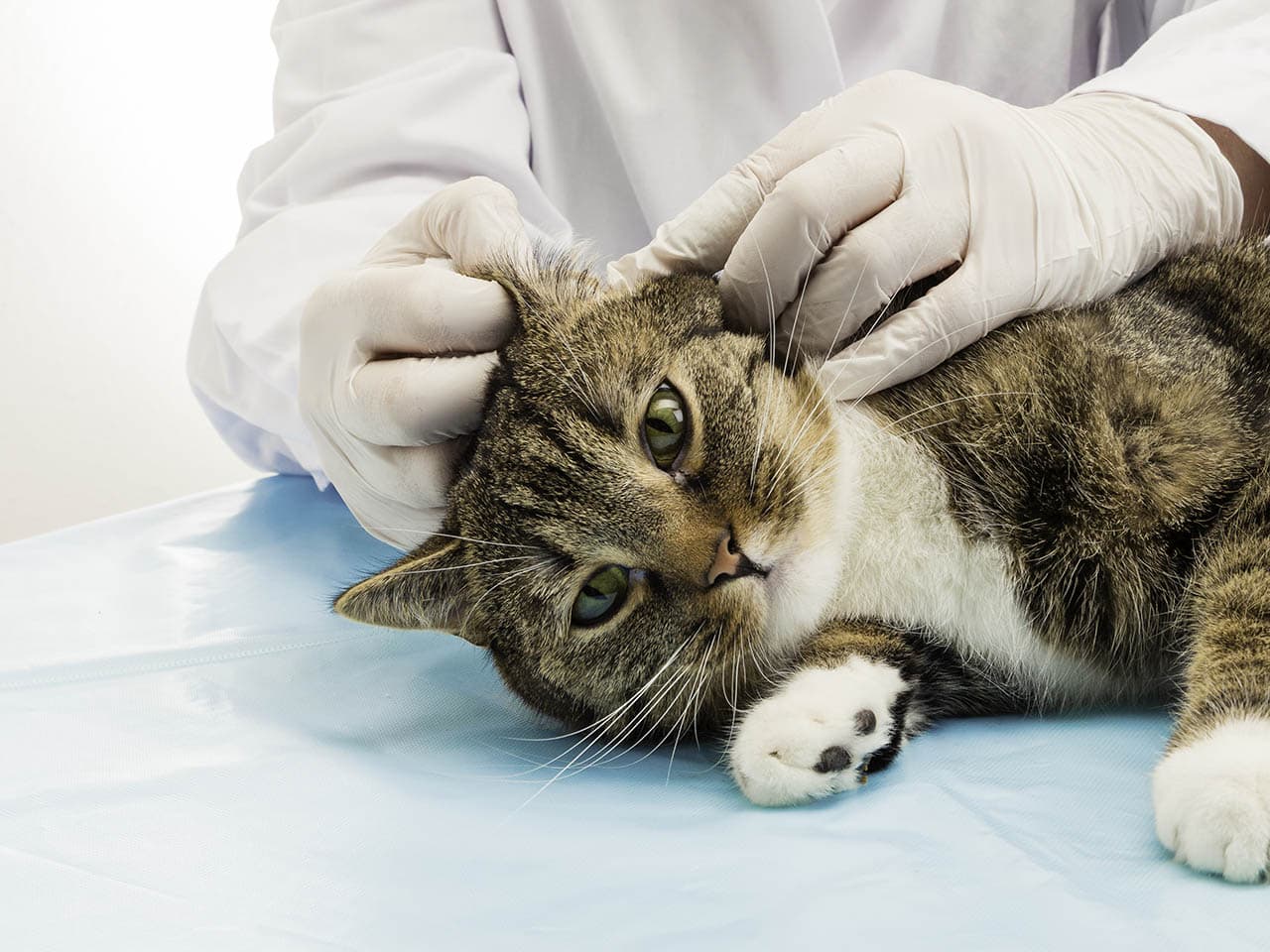Click to Skip Ahead
Cats are natural hunters. This instinctual behavior has been retained from their ancestors, who had to hunt frequently to satisfy their need for a carnivorous diet. The prey drive is practically insatiable in many modern housecats, and their interest can always be piqued by a cat toy running across the floor.
Regarding hunting, indoor-only cats will not likely come across the rodents or small mammals their outdoor-dwelling counterparts might pursue. Thankfully, our homes are pretty good at keeping the wild creatures outside. Despite our best efforts, however, the odd fly, ant, or spider might manage to gain access.
The tiny stature and quick, darting movements of spiders are enough to trigger the feline hunting reflex and most housecats will respond with great enthusiasm. They quickly go into hunting mode. Unfortunately, some spiders can bite back and may even be venomous!
Which Spiders Are Dangerous to Pets?
In the United States, the two spiders that are of most concern are the Black Widow and the Brown Recluse. Most other spiders you find in your home might be able to deliver a bite but cannot inject enough venom to hurt a cat. Check your local wildlife office to determine which spiders might be of concern in your geographic location and how to identify them.
Black Widow Spiders
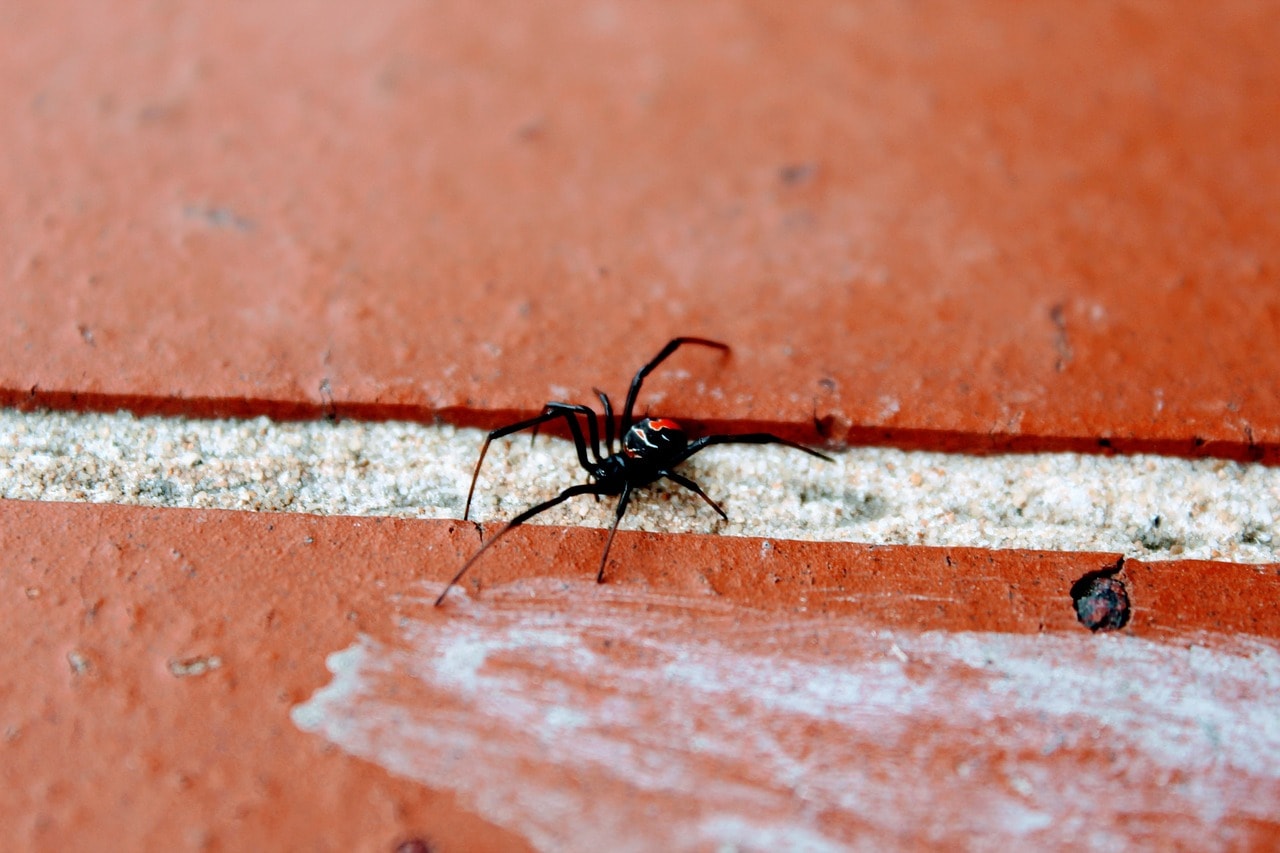
Black widow spiders are 1 inch to 1.5 inches in length. The males are smaller than the females and are brown with pink or red spots and beige stripes, depending on the species. Female Black Widows are more distinctively patterned with a jet-black body, bulbous abdomen, and often a red hourglass shape on their underside.
Thankfully, the Black Widow is not naturally aggressive and won’t bite unless provoked. Even when the spider bites, there will not necessarily be any venom released. Spider venom is energetically costly to produce, so a spider will conserve it as much as possible. A venomous bite will typically only be given during hunting or when the spider feels that its life is being threatened.
In a scientific study, even when Black Widow spiders were pinched to invoke an aggressive response, more than half of the interactions were met with a dry bite where no venom was released. However, a cat in pursuit of running prey is unlikely to respect the boundaries of a dangerous spider, even after non-venomous warning nips are given.
Brown Recluse Spider
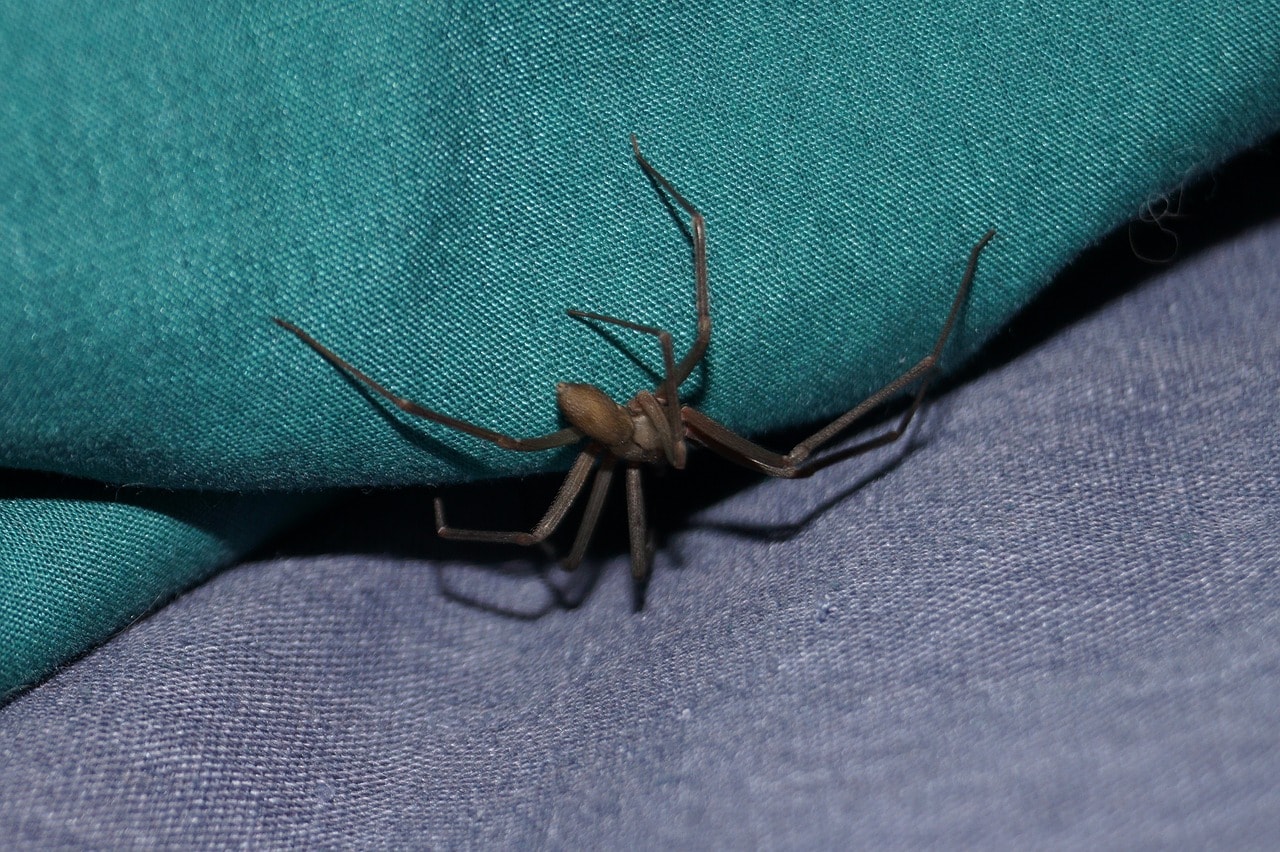
The Brown Recluse was given its name for a reason: it is a reclusive spider. These 8-legged critters are nocturnal and will spend most of their time hiding away in an undisturbed spot. The brown spider is usually around half an inch to an inch long and can be identified by the violin-shaped dark patch on its back. It is also unique because it has six eyes in three paired clusters on its head rather than having eight eyes, as most spiders do.
Not only is the spider reclusive, but it is also very non-confrontational. In a case study investigating a Kansas home infestation of over 2,000 Brown Recluse spiders, no bites were received by any of the four occupants during the 5 ½ years of living there despite frequently crossing paths with the spiders.
Venomous Brown Recluse bites are so rare that many researchers believe many reported bites have been misdiagnosed. Similar to the Black Widow, a Brown Recluse will only bite as a final effort to escape a predator that is endangering its life.
What Should I Do If My Cat Is Bitten By a Venomous Spider?
If your cat is bitten by a venomous spider, it is unlikely that you will be present during the event. You might see the sign of a bite on your cat’s skin, but it will probably be buried in the fur or hidden in the mouth if your cat ate the spider.
If you see a spider bite your cat, remove your cat from the situation so they can’t be bitten again. Since most bites are not venomous, even from a venomous spider, you can monitor your cat closely over the next 24 hours for any signs of toxicity and be ready to bring them into the emergency room at the first sign of any adverse signs.
How Can I Tell If My Cat has Been Bitten By a Spider?
The Black Widow spider’s venom is made up of a neurotoxin that causes neurological signs of toxicity. Soon after a bite, you may notice excessive salivation, vomiting, or drastic changes in behavior, indicating pain in a cat. You’ll want to bring your cat to the emergency veterinarian if you notice these occurring for longer than a few hours.
The signs can escalate to loss of coordination and paralysis, which are always a grave cause for concern. If you notice these signs in your cat, take them to an emergency veterinarian immediately. The venomous bite of a Brown Recluse spider most often targets the skin where the bite occurred.
The venom causes tissue death, which can cause varying degrees of redness, swelling, rashes, or blisters around the bite. Sometimes, this can lead to systemic effects, which can manifest as loss of appetite, extreme lethargy, and pain. Again, if you see these signs in your cat for more than a few hours, bring your cat in to see a vet as soon as possible.
What Will the Vet Do If My Cat Was Bitten By a Spider?
Your veterinarian will develop a treatment plan depending on your cat’s signs, the severity, and the likely culprit for the bite. The plan can include the administration of intravenous fluids, use of supplemental oxygen, pain medication, administration of anti-venom, and ongoing monitoring. If treatment for a venomous bite is sought on time, the prognosis is generally quite good.
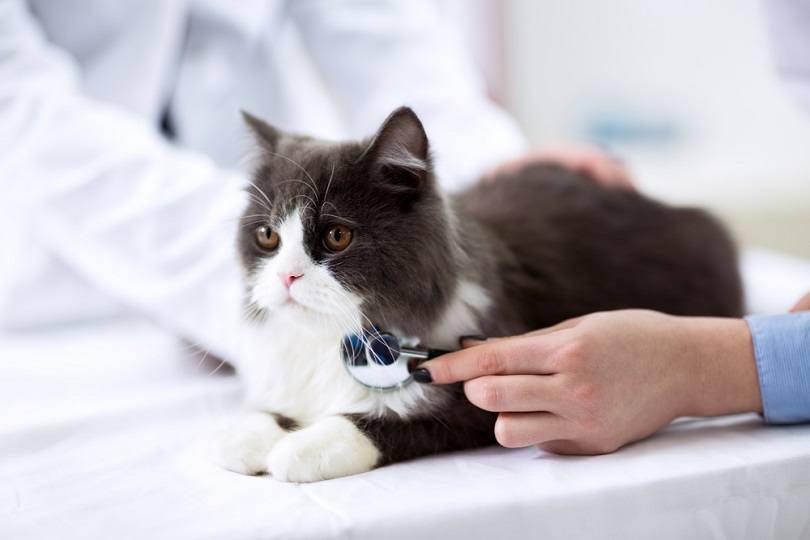
Is There a Way to Prevent Venomous Spiders From Getting Into My Home In the First Place?
It is possible to reduce the likelihood of a venomous spider entering your home. Vacuuming regularly will keep the home tidy and less hospitable to other insects, which may attract hungry spiders. A home can also be spider-proofed by filling in holes and gaps along the walls, which can lead outside.
Additionally, you can eliminate anything around the house that a spider can as a shelter. Piles of wood, for example, tend to be a place where spiders shelter or choose to make their home.
Frequently Asked Questions About Spiders and Cats
Is it ok if my cat eats a spider? Can cats die from eating spiders?
Your cat is unlikely to die or get sick by eating any house spider, even a venomous one. If your cat has not been bitten, any venom in a spider’s body will be neutralized through the digestive process. A spider’s venom is meant to be injected into the bloodstream to exert its toxic effects.
However, it is possible for your cat to get bitten on the inside of the mouth, so if you live in an area with venomous spiders, you should know the signs that a spider has bitten your cat.
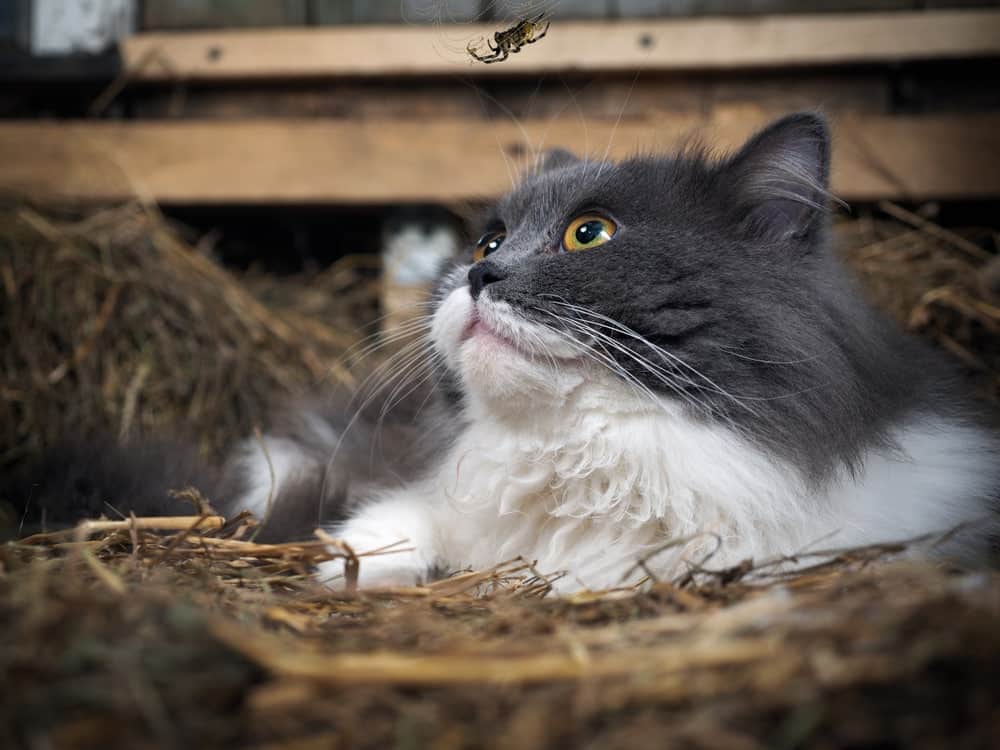
Are Daddy Long Legs spiders and Wolf Spiders dangerous to cats?
The Daddy Long Legs and Wolf Spider may look intimidating, but they cannot harm your cat. The spiders’ venomous bites are enough to take down an insect, not a feline.
Conclusion
Hopefully, your cat never goes head-to-head with a venomous spider. It is difficult for a natural predator to turn the other cheek, and something scurrying across their territory will be nearly impossible to ignore! Thankfully, spiders only use a venomous bite as a last resort, and now you’ll know what signs to look out for if you suspect that your four-legged friend was given a toxic nip.
Featured Image Credit: Andre Mueller, Shutterstock

